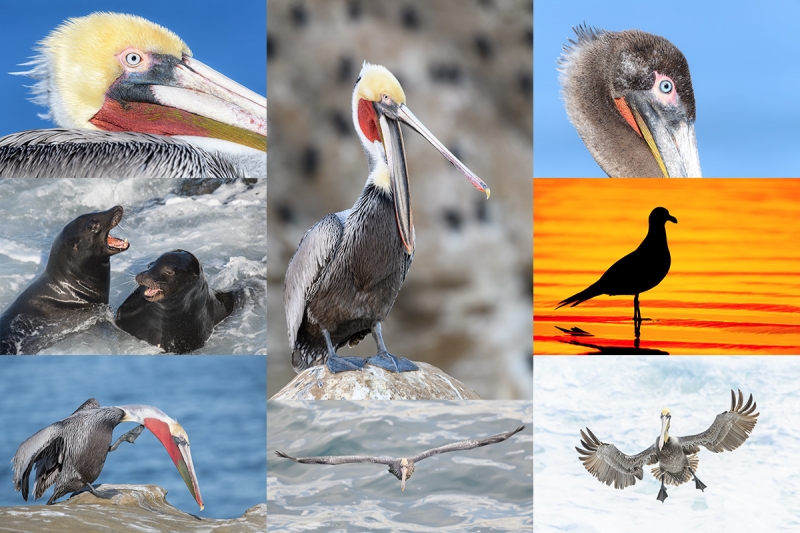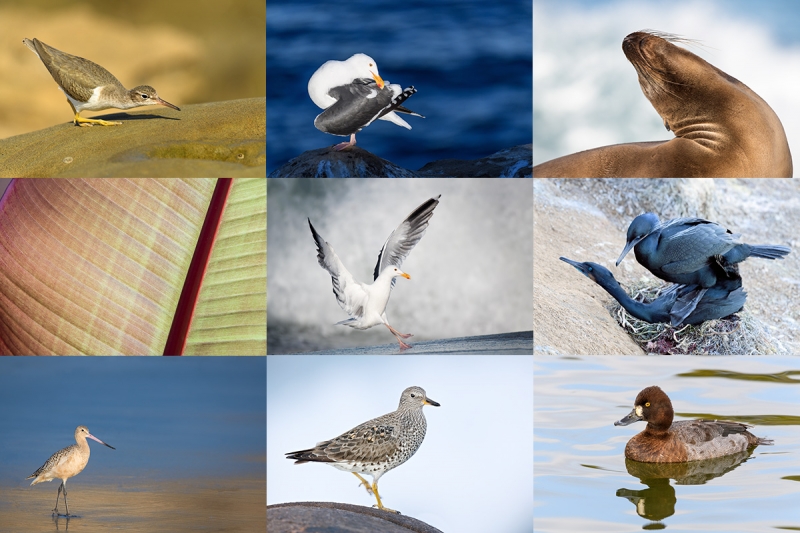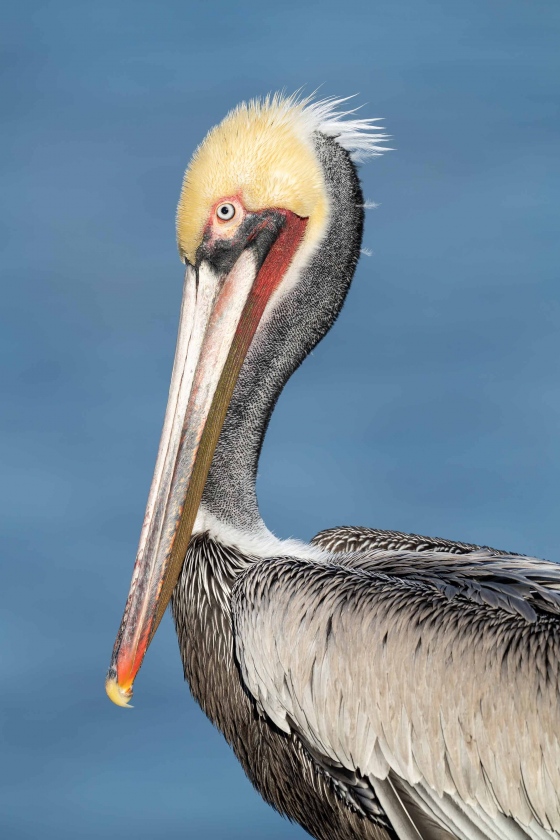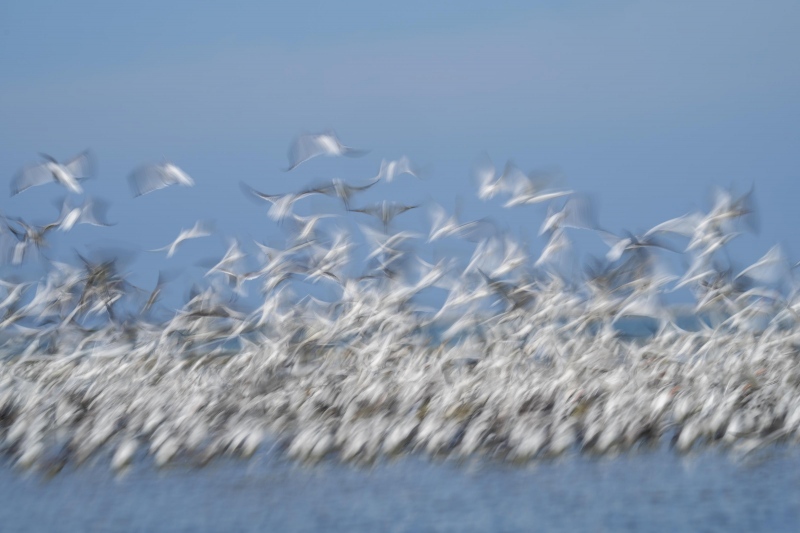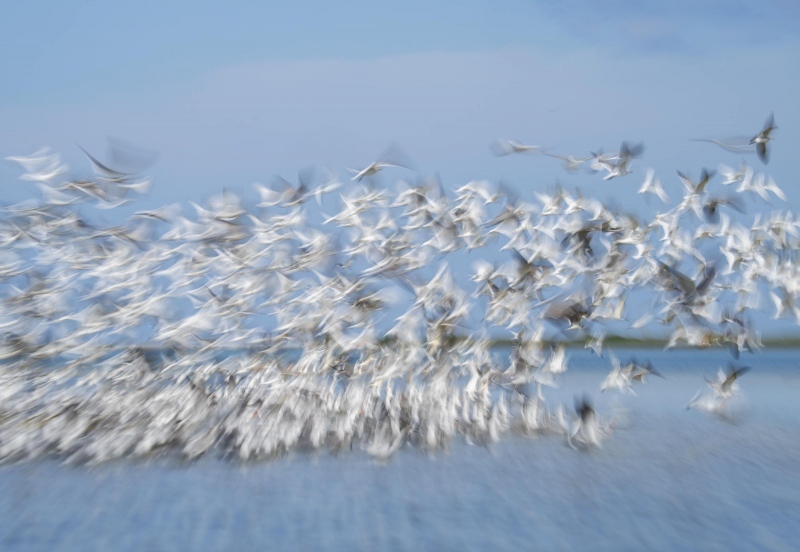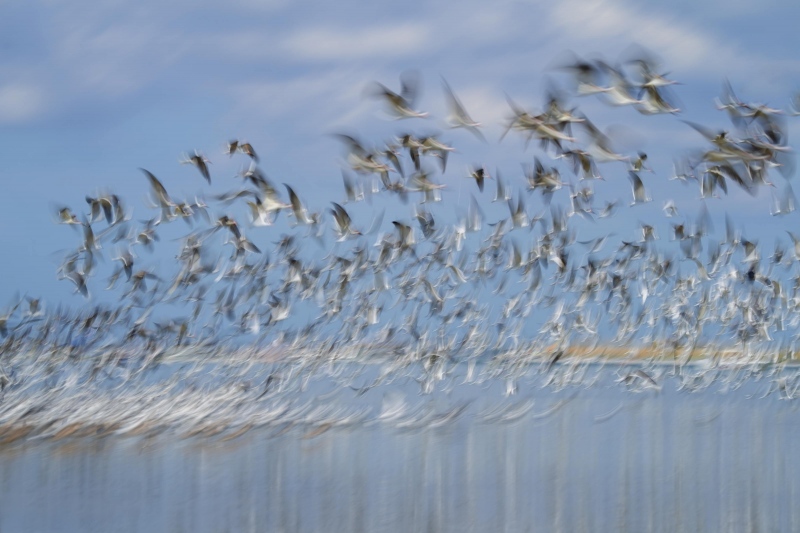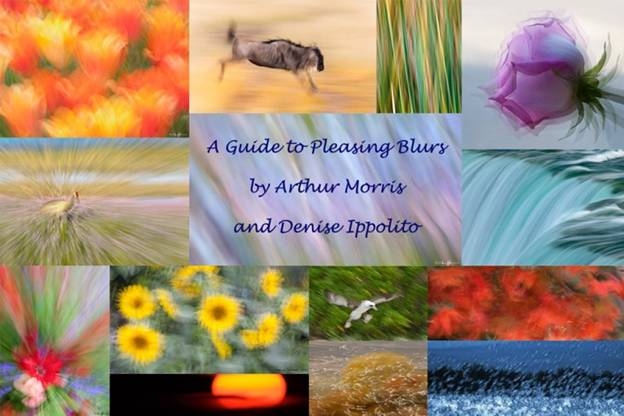What’s Up?
Today is Wednesday 27 October 2022. I woke early and drove toward town on SR 60 with a cardboard box, a heavy-duty plastic bag, and a shovel to pick up a road-killed raccoon that I had been seeing for several days. It was bigger than I had thought, and smelled a lot worse than I could have imagined. I headed back to ILE and placed the raccoon in the middle of the South Peninsula. A Crested Caracara has been flying around but has shown zero interest in the latest iteration of my road-Kill Cafe. It is 8:58am and I am sitting in my SUV working on today’s blog post. Wherever you are, and whatever you are doing, I hope that you too have a great day. This blog post took about two hours to prepare including the time spent on creating the YouTube video below.
If you have ever attended a photo tour of any type, I urge you to read the What They Are Saying About BAA IPTs item below to find out what sets IPTs above all other photographic trips.
Remember that you can find some great photo accessories (and necessities, like surf booties!) on Amazon by clicking on the Stuff tab on the orange/yellow menu bar above. On a related note, it would be extremely helpful if blog-folks who, like me, spend too much money on Amazon, would get in the habit of clicking on the Amazon logo link on the right side of each blog post when they shop online. As you might expect, doing so will not cost you a single penny, but would be appreciated tremendously by yours truly. And doing so works seamlessly with your Amazon Prime account.
Please remember that if an item — a Delkin flash card, or a tripod head — for example, that is available from B&H and/or Bedfords, is also available in the BAA Online Store, it would be great, and greatly appreciated, if you would opt to purchase from us. We will match any price. Please remember also to use my B&H affiliate links or to save 3% at Bedfords by using the BIRDSASART discount code at checkout for your major gear purchases. Doing either often earns you free guides and/or discounts. And always earns my great appreciation.
Important Note
As an Amazon Associate, I earn a small percentage from when you purchase from Amazon after using any of the links on the blog (including the logo-link immediately above). Huge thanks, BTW 🙂
What They Are Saying About BAA IPTs
Unsolicited via e-mail from Pete Myers
I just spent 4 days in the field in a graduate course in bird photography taught by Artie Morris at Fort DeSoto. After almost 50 years of experience pointing cameras at birds from the Arctic to Tierra del Fuego, New Zealand and beyond, I thought I was good enough. But what I learned from Artie in just four days has taken me to a whole new level. As he aptly puts it, “birds as art,” not simply bird photography. One of those 4 days was the most satisfying I’d ever experienced, anywhere. The IPT left me euphoric about what I’d learned, and frighteningly committed to recreating my portfolio with the techniques and insights he taught me.
Via e-mail from multiple IPT participant David Hollander
Primarily, what distinguished the San Diego IPT other photographic classes that I have attended was the “granularity” and specificity of the information you shared. By that, I am referring to the level of specific, technical information that was covered. This was helped by the fact that you often gave an explanation as to why you made your choices. For example, when we first arrived at the location, you told people to shoot at 1600, F 5.6, and various shutter speeds. As the light got better, you progressively moved to lower ISOs, and gave us rules-of-thumb on what ISOs to use in different lighting conditions.
You further explained in one of the review sessions that with modern cameras and good software, the noise isn’t really a problem and that you could get rid of the noise from a 1600 ISO a lot easier than fixing a blurred image. Similarly, you gave precise instruction on what aperture to use in various circumstances. In general, before your class, my “default” mode was to shoot in aperture priority, usually at about f/8 or f/9. The reason wasn’t that I was trying to capture background, but instead to increase my chances of getting the bird’s head in focus if I got the focus point in the wrong place. I will revisit that approach now. During an afternoon session, you showed a picture that had the bird’s eye in focus, but the tip of the beak was slightly soft. When I asked you whether you would have used a higher f/stop in that case, you went to a website showing the impact on the depth of field at the given distance of moving up a stop, which was only a small fraction of an inch. That demonstrated why increasing the f/stop would not have worked very well in that case.
From a teaching perspective, hearing the same information in multiple channels makes it more likely for people to absorb it and remember it, so the technical explanations helped the main message sink in. Overall, I found the advice and instruction to be valuable and “actionable.” It was all there for those who were listening.
The comparison of slightly different images of the same bird was also very helpful. It showed what you were looking for aesthetically, particularly with regards to head angles and image designs. I should note, however, that differences in many of the images that were acute to you were pretty subtle to me, and that most of the photos you rejected were ones that most photographers would have been proud of.
Thanks again for another great trip.
Via e-mail San Diego IPT participant Gerold Hanck
Thanks for a great IPT. Here is whatI learned:
1) I learned that manual mode is no harder to use than any other camera mode, and makes learning how to use your camera both easier and faster because it gives you more usable feedback. I think manual mode teaches you a lot more about shutter speed and aperture and how they affect the image than aperture or shutter priority modes do.
2) I learned that good composition is less about what you see when you look through the camera and more about putting your camera (and yourself) in a position where there are more possibilities to take good pictures. Frequently changing your position changes not only what you see but how you see.
3) I learned that moving around when I was near the birds would not scare them off if I moved slowly and watched how the birds reacted to my movements.
4) I learned not to try not to rush a shot. You have to be ready, but you also to make yourself slow down and try to stay calm. It’s hard to resist the “itchy trigger finger.”
5) I learned that it’s easy to take pretty pictures but that it’s very hard to take memorable pictures. Snapping the shutter without thinking or visualizing what you want is a recipe for creating lots of boring, forgettable images.
San Diego, California: A Bird Photographer’s Paradise!
I’ve been visiting San Diego, California for more than 50 years, and photographing there for almost four decades. It truly is one of my favorite bird photography locations on the planet. The Pacific race Brown Pelicans with their fire-engine red and olive green bill pouches, are indeed the stars of the show, but there are lots of other great birds there that are relatively easy to photograph. Check out this five minute video to see the potential.
Be sure to subscribe to my YouTube channel by clicking here.
|
|
|
San Diego offers a wealth of very attractive natural history subjects, including and especially the Pacific race of California Brown Pelican. With annual visits spanning more than four decades, I have lots of photographic experience there … Click on the composite to enjoy a larger version. |
The 2022 San Diego Brown Pelicans (and more!) IPT. Monday 17 January thru the morning session on Friday 21 January 2022. Four full and one-half day: $2999.00. Deposit: $899.00. Limit: 8 photographers/Openings: 7
Join me in San Diego to photograph the spectacular breeding plumage Brown Pelicans with their fire-engine red and olive green bill pouches; Brandt’s (nesting with eggs and possibly chicks) and Double-crested Cormorants; breeding plumage Wood and Ring-necked Duck; other duck species possible including Lesser Scaup, Redhead, Northern Shoveler and Surf Scoter; a variety of gulls including Western, California, and the gorgeous Heermann’s, all in full breeding plumage; shorebirds including Marbled Godwit, Willet, Sanderling and Black-bellied Plover; many others are possible including Least, Western, and Spotted Sandpiper, Whimbrel, Black and Ruddy Turnstone, Semipalmated Plover, and Surfbird; Harbor Seals (depending on the current regulations) and California Sea Lions. And as you can see by studying the IPT cards, there are some nice bird-scape and landscape opportunities as well. Not to mention a ton of excellent flight photography opportunities and instruction.
Please note: where permitted and on occasion, ducks and gulls may be attracted (or re-located) with offerings of grains or healthy bread.
Learning Exposure, Whether You Like It Or Not
Whether you like it or not, we will be beating the subject of exposure like a dead horse. In every new situation, you will hear my thoughts on the exposure situation along with my thoughts on both Nikon and Canon histograms and SONY Zebras. Whether you like it or not, you will learn to work in manual mode and to get the right exposure every time as long as a bird gives you ten seconds with the light constant. (Or two seconds with SONY zebras…) And you will learn what to do when the light is changing constantly. What you learn about exposure is one of the great takeaways on every IPT.
|
|
|
Though the pelicans will be the stars of the show on this IPT, there will be many other handsome and captivating subjects in wonderful settings. Click on the composite to enjoy a larger version. |
It Ain’t Just Pelicans
With gorgeous subjects just sitting there waiting to have their pictures taken, photographing the pelicans on the cliffs is about as easy as nature photography gets. With the winds from the east almost every morning there is usually some excellent flight photography as well, often with 70-200mm lenses! And the pelicans are almost always doing something interesting: preening, scratching, bill pouch cleaning, or squabbling. And then there are those crazy head throws that are thought to be a form of intra-flock communication. You will be guided as to how to make the best of all of those opportunities. And depending on the weather and local conditions and tides, there are a variety of other fabulous photo chances available in and around San Diego.
|
Did I mention that there are lots of great birds and natural history subjects in San Diego in winter? Click on the composite to enjoy a larger version. |
The San Diego Details
This IPT will include five three hour morning photo sessions, four one and one-half afternoon photo sessions, four working brunches that will include image review and Photoshop sessions. On rare cloudy day occasions, we may — at my discretion, stay out in the morning for a long session and skip that afternoon. To ensure early starts, breakfasts will be your responsibility. And so that we can get some sleep, dinners will be on your own as well. In the extremely unlikely event that Goldfish Point is closed due to local ordinance (or whimsy) — that has never happened in the past fifty years, I will of course do my very best to maximize our photographic opportunities.
An $899 deposit is required to hold your slot for this IPT. You can send a check (made out to “BIRDS AS ART”) to us here: BIRDS AS ART, PO Box 7245, Indian Lake Estates, FL, 3385, or call Jim or Jennifer at the office with a credit card at 863-692-0906. Your balance, payable only by check, is due right after you sign up.
Travel Insurance
Travel insurance for both big international trips and US-based IPTs is highly recommended as we never know what life has in store for us. I strongly recommend that you purchase quality travel insurance. Travel Insurance Services offers a variety of plans and options. Included with the Elite Option or available as an upgrade to the Basic & Plus Options you can also purchase Cancel for Any Reason Coverage that expands the list of reasons for your canceling to include things such as sudden work or family obligation and even a simple change of mind. My family and I use and depend on the great policies offered by TIS whenever we travel. You can learn more here: Travel Insurance Services. Do note that many plans require that you purchase your travel insurance within 14 days of our cashing your deposit check or running your credit card. Whenever purchasing travel insurance, be sure to read the fine print carefully even when dealing with reputable firms like TSI.
|
Variety is surely the spice of life in San Diego. Click on the composite to enjoy a larger version. |
Getting Up Early and Staying Out Late
On all BIRDS AS ART IPTS including and especially the San Diego IPT, we get into the field early to take advantage of unique and often spectacular lighting conditions and we stay out late to maximize the chances of killer light and glorious sunset silhouette situations. We often arrive at the cliffs a full hour before anyone else shows up to check out the landscape and seascape opportunities.
Typos
In all blog posts and Bulletins, feel free to e-mail or to leave a comment regarding any typos or errors. Just be right :).

